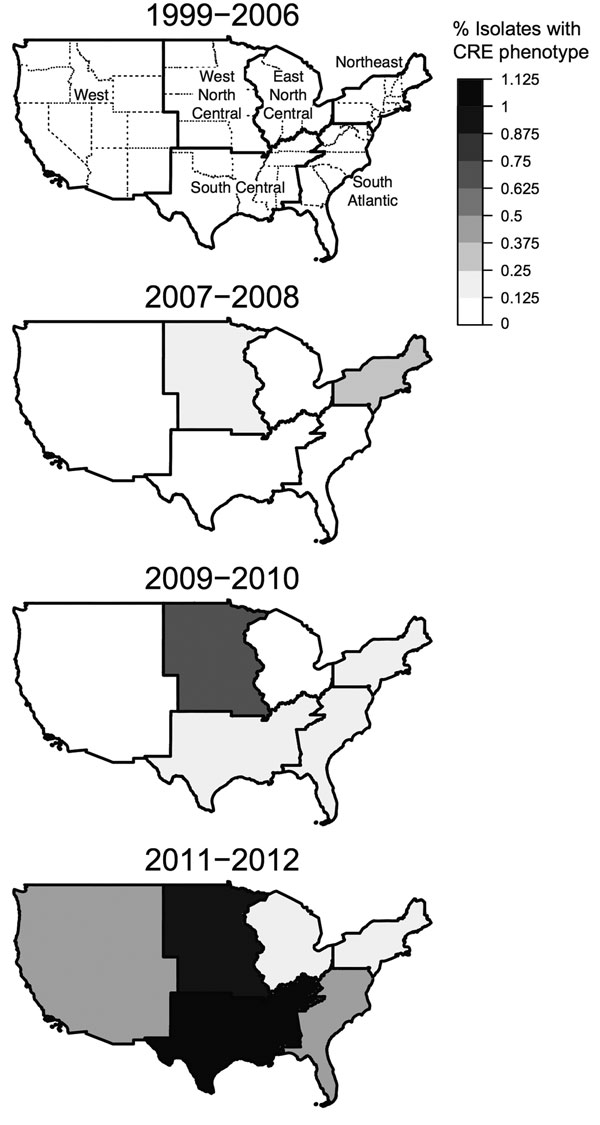Volume 21, Number 11—November 2015
Research
Carbapenem-Resistant Enterobacteriaceae in Children, United States, 1999–2012
Figure 3

Figure 3. Regional trends in the prevalence of carbapenem-resistant Enterobacteriaceae (CRE) isolates from children, The Surveillance Network−USA database, 1999–2012. A) Percentage of isolates with CRE phenotype, 1999–2006 (0%). The 6 regions shown correspond to the 4 US Census regions (West, Northeast, South, Midwest). However, the Midwest and South regions, respectively, were split into East and West North Central and South Central and South Atlantic. Isolates from Alaska and Hawaii are included in the West region. B–D) Percentage of isolates with CRE phenotype, by 2-year period, 2007–2012. There was a significant positive quadratic trend for West (p = 4.1 × 10−15), South Atlantic (p = 9.4 × 10−12), East North Central (p = 0.0002), South Central (p = 5.2 × 10−17), and West North Central (p = 7.2 × 10−8). There was a significant linear trend for North East (p = 5.8 × 10−8). Data for patients <1 year of age were not available for all years and were excluded from this analysis.